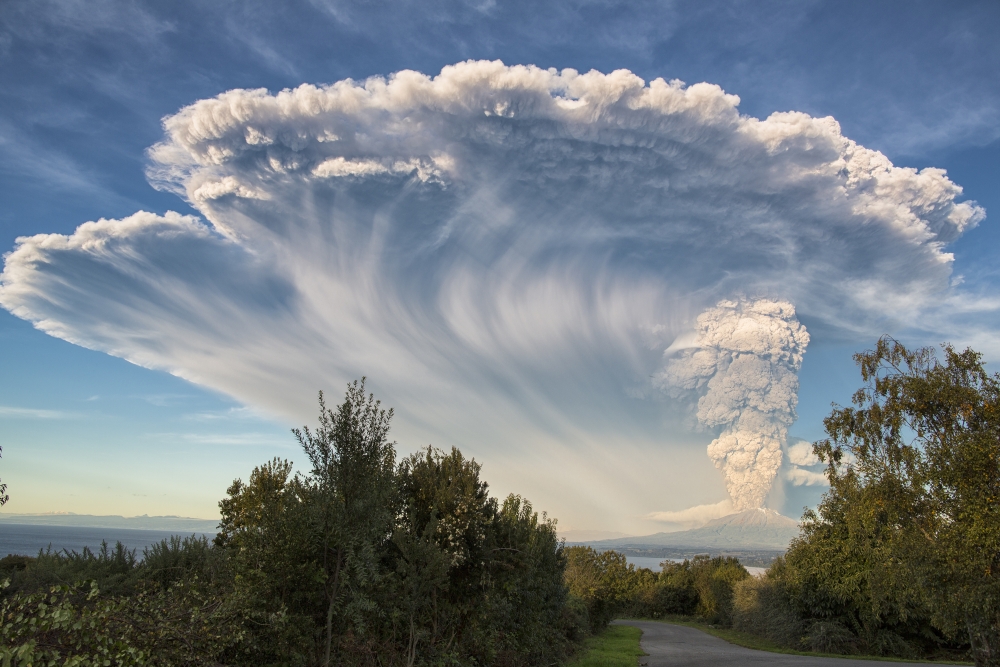
Detecting Volcanic Eruptions

To borrow from a philosophical thought experiment: If a volcano erupts in a remote part of the world and no one hears it, does it still make a sound?
Indeed, it does. And not only does the sound occur, but it also can tell scientists about the timing and duration of the eruption itself.
As part of the United Nations’ Comprehensive Nuclear-Test-Ban Treaty, an International Monitoring System was built to detect any nuclear explosion on Earth — underground, underwater or in the atmosphere. Within that system is a network to detect atmospheric infrasound — sound waves with frequencies below the lower limit of human audibility — which scientists can also use to track volcanic eruptions in remote locations.
A new case study by an international team of scientists, led by UC Santa Barbara geophysicist Robin Matoza, examined data from the 2015 eruption of the Calbuco volcano in the Los Lagos Region of Chile. The researchers chose this event because they could compare long-range data with local readings, enabling study of the large volcanic explosion using infrasound sensors.
The team’s analysis demonstrated that infrasound recorded at regional (15 to 250 kilometers) and long distances (greater than 250 km), such as on the International Monitoring System, delivered similar constraints on the timing and duration of the eruption, as did data from a local (less than 15 km) seismic network. Their results appear in the Journal of Geophysical Research: Solid Earth.
“We want to be able to monitor regions in the world where many volcanoes do not have local monitoring stations like Calbuco does,” said Matoza, an assistant professor in the Department of Earth Science. “In some places — for example, the Aleutian Islands in Alaska — it’s challenging to maintain observation networks on the volcanoes themselves due to harsh weather and their remote locations. Consequently, many Aleutian volcanoes are not instrumented. We want to be able to detect, locate and characterize remote explosive volcanic activity because eruptions can release ash clouds into the atmosphere, which are hazardous to aircraft.”
In remote locales, researchers usually rely on satellite-based technology to monitor volcanoes, but according to Matoza, without ground-based information, it’s difficult to know exactly when the eruption happened and how long it lasted.
“What’s nice about infrasound is that we are able to gather information farther from the source than with traditional ground-based monitoring methods,” Matoza explained. “Typically, seismic signals from eruptions don’t propagate more than a few hundred kilometers from the source. With Calbuco, for example, you can see the eruption very clearly on the local monitoring stations and out to about 250 kilometers on regional seismic networks, but with infrasound, the signal propagates in the atmosphere for more than 5,000 kilometers. What’s more, infrasound delivers different information than seismic data alone.”
The Chilean national seismic network includes a relatively sparse number of infrasound sensors co-located with 10 seismometers (seismo-acoustic stations), which enabled this study. Placing such infrasound sensors at more seismic stations in volcanically active regions would be valuable, Matoza noted. The fact that one of the Chilean seismo-acoustic stations was only 250 kilometers from the eruption highlights the significant potential of existing regional seismic networks for augmenting the International Monitoring System with more infrasound sensors for eruption detection and monitoring.
“One of the recommendations from this study is that more seismic networks should also have infrasound sensors,” Matoza said. “It’s one extra channel of data to record that provides very useful information for improving volcano monitoring.”



